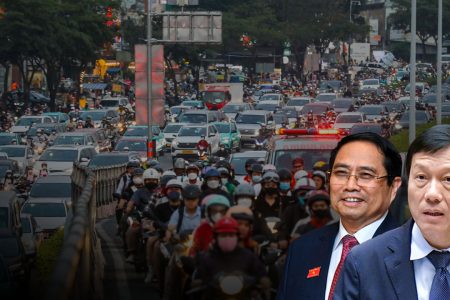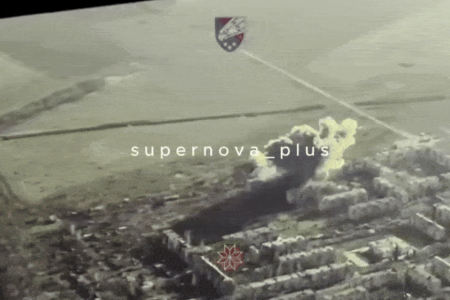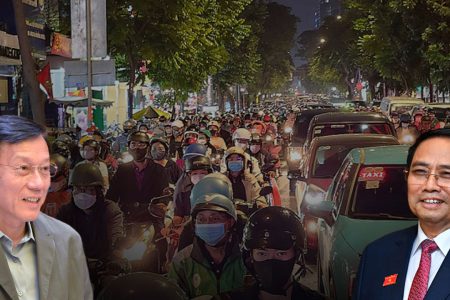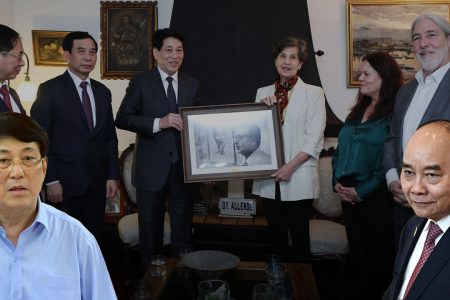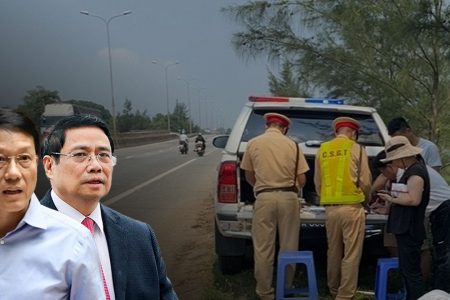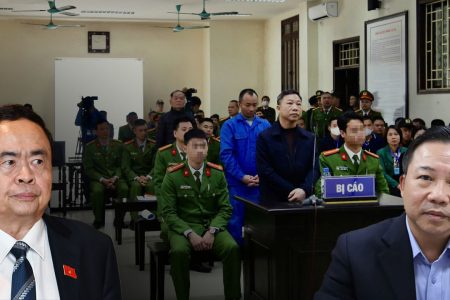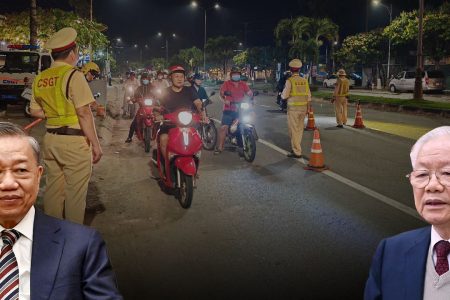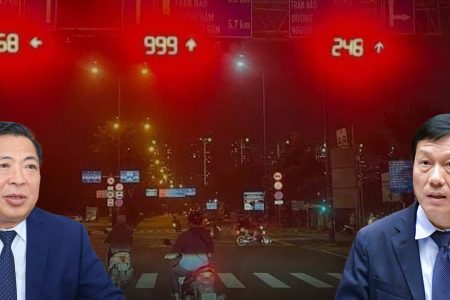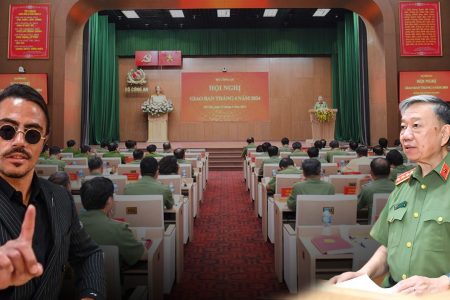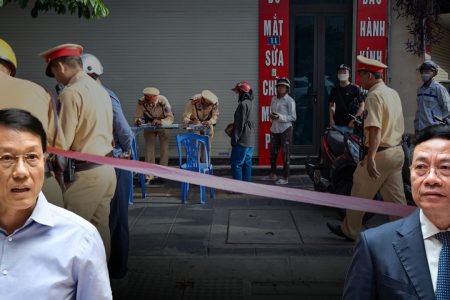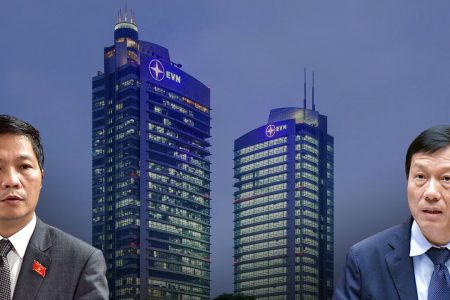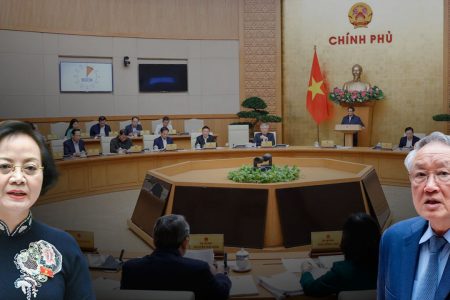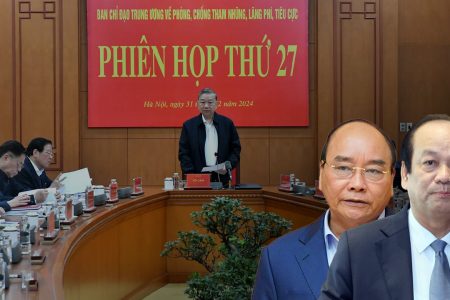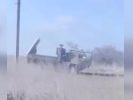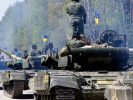
“The victory of the historic Dien Bien Phu campaign was the culmination of the strategic East-Spring offensive 1953-1954 led by the Communist Party of Vietnam (CPV)’s Central Committee and its Politburo – headed by President Ho Chi Minh- Commander-in-chief of the army nationwide and the Chairman of the Supreme Defense Council, and CPV’s General Secretary Truong Chinh – directly lead and concretely direct all aspects of politics, military, and diplomacy, domestically and internationally.”
“Together with President Ho Chi Minh – the supreme leader of the Vietnamese revolution, General Secretary Truong Chinh and First Secretary of the CPV’s Central Committee Le Duan are the highest responsible people who led the country to independence and unification at glory in the two resistance wars against the French colonialists and the American imperialists’ invasion.”
The above two paragraphs are excerpts from a recently printed book in Vietnam, expressing a historical point of view, according to which, the role of General Vo Nguyen Giap, the most famous general in Vietnam in the 20th century, is not as great as most of the traditional Vietnamese official books said.
The book “Party and Uncle Ho: from Dien Bien Phu to the Great Victory in Spring 1975” was published by Information and Communication Publishing House in 2015, when celebrating the 40th anniversary of the reunification of Vietnam.
The author of the book is Ph.D. Le Trung Nguyet, former head of Political Science Division, Institute of State and Law, Vietnam Academy of Social Sciences.
Ph.D. Le Trung Nguyet is the daughter of Mr. Le Duc Tho, former Politburo member and former head of the Central Organizing Commission from 1956 to 1982.
In the book, the author emphasizes: “Failure to exclude individualism from the process of researching and reenacting the revolutionary history of the nation will not affirm the collective leadership intelligence of the Party Central Committee and the Politburo through specific historical periods, especially at the turning points of the revolution.”
“Together with President Ho Chi Minh – the supreme leader of the Vietnamese revolution, General Secretary Truong Chinh and First Secretary of the Central Committee of the Party Le Duan are the people led the nation to independence and unification at glory in the two resistance wars against the French colonialists and the American imperialists’ invasion.”
Dien Bien Phu: Is Ho Chi Minh’s role bigger than Vo Nguyen Giap’s one?
Right in the opening chapter on the anti-French resistance war, the author emphasizes many passages with the implication of the supreme commanding and strategic role of President Ho Chi Minh.
“According to the plan of the Border Campaign Command, led by General – Commander-in-Chief Vo Nguyen Giap as the Commander and Political Commissar of the Campaign, Cao Bang is the first target to attack. In terms of terrain and enemy force arrangement, President Ho Chi Minh instructed to attack Dong Khe base first, because Dong Khe was an important location and also a place where the enemy was weaker than Cao Bang, after losing Dong Khe, the enemy must bring troops to rescue and create conditions for us to destroy them.”
Summarizing this chapter, the author emphasizes the role of Ho Chi Minh and Truong Chinh.
“The preparation and implementation of the Dien Bien Phu Campaign clearly show the strategic vision in defining the key battlefields and the unique military thinking of the Party Central Committee, collective leadership intelligence, and direction, specifically, directly, comprehensively, closely and continuously by the Politburo and the Secretariat – headed by President Ho Chi Minh and General Secretary Truong Chinh.”
The author said: “The direction of President Ho Chi Minh and General Secretary Truong Chinh at the 4th Plenum of the Central Conference in the 2nd term in January 1953, on artillery building and deeply grasp the motto ‘firm and moving forward’ has decisive significance for the complete victory of the Dien Bien Phu Campaign.”
The author pointed out: “President Ho Chi Minh warned and criticized the thought of ‘eager to fight loudly and win loudly, undermine the enemy,’ and also said ‘fight when feel sure of winning.’ But in fact, the motto “hit fast, win quickly” was still deployed even from the beginning of the Dien Bien Phu Campaign (then forced to pull artillery and send troops to redeploy) as well as during the second attack (failed to achieve the set target and lost).”
“Thanks to the timely, continuous, and resolute direction of the Politburo and the Secretariat, in the end, the motto ‘carefully strike’ was strictly followed.”
Ho Chi Minh City and the Battle of Mau Than 1968
In the chapter on the 1968 General Offensive, the author affirms that President Ho Chi Minh completely understood the plan and strongly approved it.
“He had a meeting with the Politburo to decide and steer the Tet offensive to defeat the American imperialist’s will to invade, forcing the US to descend the ladder and negotiate with us.”
Author Le Thu Nguyet points through the supporting arguments for her claim, such as:
The Politburo meeting in October 1967, chaired by Truong Chinh. This time, Van Tien Dung reported the campaign plan to attack Saigon and other cities for the Politburo’s approval.
First Secretary Le Duan and General Vo Nguyen Giap did not attend this meeting because they were undergoing medical examination and treatment abroad.
After a week of listening to the report and discussion, Truong Chinh concluded: “The Politburo agreed on the idea, approved the military plan for the military comrades to timely deploy. There were three remaining issues to consider. Think more: Rebellion, form a coalition government and open a diplomatic front, wait for Le Duan to return to meet again.”
Also in October 1967, the police force “destroyed anti-Party organizations, worked as intelligence for foreign countries of a number of high-ranking officials in Hanoi.”
On November 10, 1967, in order to stabilize the internal situation and confirm the determination of the entire Party, the entire people prepared to carry out the strategic offensive of Tet 1968, President Ho Chi Minh signed an Order announcing the “Ordinance punish counterrevolutionary crimes.”
On December 28, 1967, the Politburo had a meeting to issue a Resolution on “Situation and mission of the Southern revolution,” deciding to open the General offensive and rebellion in Tet 1968.
During this historic meeting, President Ho Chi Minh instructed: “The plan must be meticulous, the contract must be very consistent, the secret must be absolute, the action must be determined, and the staff must be exemplary.”
This resolution of the Politburo was then passed by the 14th Plenum of the 3rd Central Committee and became the Resolution of the 14th Plenum of the 3rd Central Committee, January 1968.
On January 1, 1968, at 14:30, President Ho Chi Minh met with the Politburo and advised a number of tasks to be resolved in the coming time.
At 16 o’clock, he left Hanoi for Chinese treatment.
On the morning of January 31, 1968, the Central Committee of the Southern Department, the Southern Military Commission and the Central Committee of the National Front for the Liberation of South Vietnam ordered a general attack and a general uprising in the whole Southern region.
On April 22, 1968, just one day after returning from Beijing to Hanoi, President Ho Chi Minh had a meeting with the Politburo, listening to the report on the entire offensive and rebellion of the 1968 Tet Offensive.
On April 24, 1968, the Politburo met, approved the proposal to continue the second offensive of the Central Department of the South and to coordinate with the diplomatic front. The Politburo issued a Resolution on the opening of the second round of the general offensive and uprising.
Eight days later, on May 13, 1968, the first public meeting between the US delegation and the Democratic Republic of Vietnam was opened at Hall Kléber, Paris.
What does this book say about the role of Le Duan?
With 26 consecutive years in the position of First Secretary and General Secretary of the Communist Party of Vietnam, Le Duan has been called “a resilient communist soldier, an outstanding leader of the Party” by the Communist Party.
The Vietnamese public for a long time still considers Le Duan and Le Duc Tho (the father of author Le Thu Nguyet) as “a pair” in the Party’s decisions for decades.
Some independent overseas researchers also consider Le Duan to have a dominant role in the Party, even overwhelming President Ho Chi Minh in the 1960s.
Also in this book, in the period 1957-1959, the author asserted that Mr. Le Duan supported the policy of using armed forces in the South.
In August 1956, Le Duan completed the draft “Outline of the Southern Revolution” which says “Our people in the South have only one way to go up against the US-Diem, to save the country and save themselves. It is the way of revolution.”
In the book quoted Vo Chi Cong as saying at the end of 1957, Le Duan said “when he first came out, he proposed to prepare a plenum to issue a resolution in the spirit of that outline, but some people objected because they feared that the US would denounce us of violating the Geneva Agreement and using the pretext of sending troops into the South.”
In the letter “To Mr. Muoi Cuc and his comrades of South Vietnam on February 7, 1961,” Le Duan repeated: “At that time, some comrades suggested not to fight armed for fear that the use of armed forces would affect the fight for freedom and democracy. But I have made it clear the need to build armed forces.”
Ms. Le Thu Nguyet’s book stated the point: “From the objective process of historical events, two delays can be seen: a delay of nearly 2 years before the approval of the 15th Plenum Resolution and a 4-month delay to the dissemination of this resolution to the Southern Party Committee. It was likely that the thought of fearing the US and ‘work toward peace” prevented strategic direction to armed struggle in the South and caused heavy losses.”
The role of Mr. Le Duan in the campaign against the South in early 1975 was confirmed by the book.
Accordingly, on January 8, 1975, Mr. Le Duan assigned the task of “using 3 main divisions to attack the Central Highlands, opening a corridor connecting the South Central Highlands with the Southeast, creating conditions for the army to master deploying force quickly into the East, coordinated with the main force of the Region to attack Saigon.”
But the book said that at first, there was still an idea to attack Duc Lap district, not Buon Ma Thuot.
Therefore, on January 9, Le Duc Tho “suddenly attended the meeting” of the Standing Committee of the Central Military Commission to confirm his determination to fight against Buon Ma Thuot.
Mr. Le Duc Tho said: “We have nearly 5 divisions in the Central Highlands, why we cannot attack and take Buon Ma Thuot?”
Due to having doubts in choosing to break through, Le Duan and Le Duc Tho “proposed the Politburo to send General Van Tien Dung to the battlefield of the Central Highlands to direct on the spot.”
In this chapter, the author concludes: “Victory in Buon Ma Thuot clearly shows a sharp strategic vision and quick assertiveness in the selection of leading cadres to ensure a victory of the Politburo headed by First Secretary Le Duan.”
“The wise decision of First Secretary Le Duan on the opening battle of Buon Ma Thuot in the Central Highland Campaign has been successfully implemented due to General Van Tien Dung’s direct, decisive and strategic leadership.”
The author affirms the supreme directing role of Mr. Le Duan in the last battles.
On March 18, 1975, Vo Chi Cong, Secretary of the Zone V Party Committee, telegramed Le Duan and the Politburo asking for the attack and rebellion to liberate Da Nang.
Le Duan, on behalf of the Politburo, answered yes and said: “If you can, liberate Da Nang.”
On March 24, at the Politburo meeting, Le Duan said: “The general attack began. The Central Highlands opened a breakthrough. Continue attacking Da Nang. Finally liberated Saigon …”
On April 1, in a telegram to the Central Department of the South, Le Duan instructed the need to act “speedy, daring, unexpected” to complete the task of liberating the South in April 1975.
In the entire chapter 8 on the Ho Chi Minh campaign, General Vo Nguyen Giap’s name is mentioned only 3 times.
The author concludes: “In the process of leading and directing the Spring 1975 General offensive with the culmination of Ho Chi Minh Campaign, there was close coordination in the leadership and direction of the Ministry of Government and the Southern Central Department.
“The Politburo headed by First Secretary Le Duan was determined and flexible in planning and directing the strategy very closely, specifically for the battlefields; at the same time, based on the specific progress on the battlefield and international situation, quickly and promptly adjusted the strategic opportunity plan for the South Vietnamese liberation from 1975-1976 to 1975, then before the rainy season in 1975, then right in April 1975. ”
The full text of Dr. Le Thu Nguyet’s book can now be read on General Le Duc Anh’s website.
Mr. Le Duc Anh (1920-2019) directly participated in the progression of the Vietnam War, was Deputy Commander of Ho Chi Minh Campaign and Commander of the West-South West wing against Saigon.
Thoibao.de (Translated)




